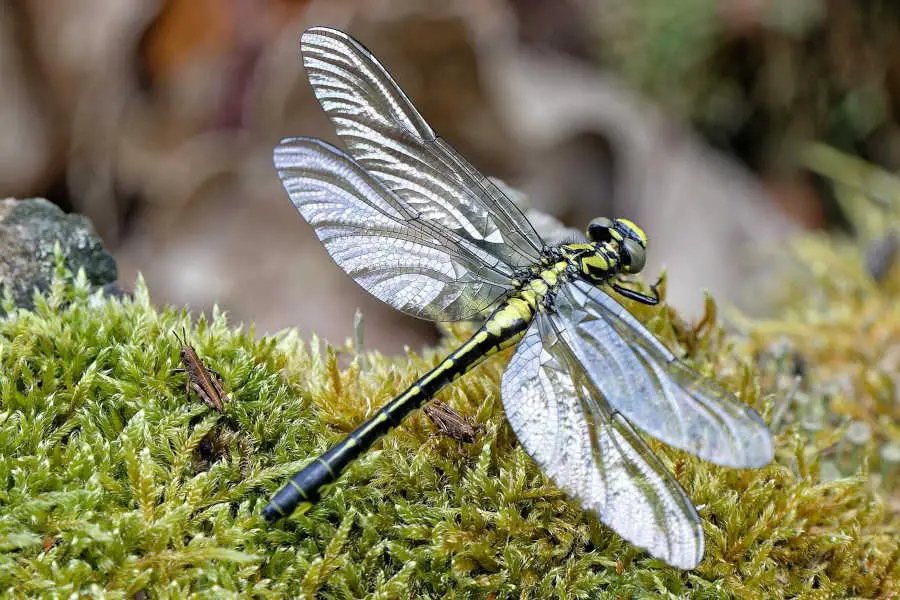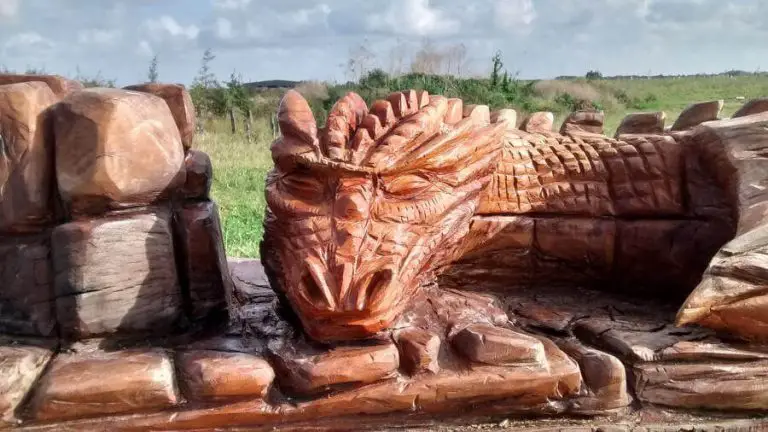The dragonfly, known as qing ting (蜻蜓) in Chinese, is a remarkable insect celebrated for its beauty and grace. With its iridescent wings and agile flight, the dragonfly captures the imagination and embodies a sense of freedom and elegance.
This creature is often associated with positive energy and vitality, making it a beloved symbol in various cultures, particularly in China. The dragonfly’s ability to hover delicately over water is not just a visual delight but also serves as a metaphor for skillful maneuvering through life’s challenges.
In Chinese culture, the dragonfly is more than just an enchanting insect; it represents prosperity, good fortune, and harmony. Historically, farmers viewed dragonflies favorably due to their role in controlling pests that threatened crops. This beneficial aspect has ingrained the dragonfly deeply into the agricultural traditions of rural China.
When a dragonfly enters a home, it is believed to bring blessings and chase away negative energy, symbolizing a positive shift in one’s life circumstances. Additionally, the idiom qing ting dian shui – 蜻蜓点水(the dragonfly lightly touches the water) reflects the dragonfly’s delicate touch on water, signifying grace and finesse in interactions.
In feng shui, the dragonfly symbolizes the balance between yin and yang energies. Its presence is thought to invite positive chi (energy) into living spaces, fostering an atmosphere of abundance and serenity.
By understanding how to position dragonfly motifs—whether through art or decor—individuals can enhance their environments to support well-being and prosperity. The dragonfly’s association with water also aligns with Feng Shui principles that emphasize fluidity and adaptability in life.
The Dragonfly in Chinese Folklore and Traditions
In Chinese folklore, the dragonfly is often intertwined with ancient myths that highlight its significance as a symbol of transformation and good fortune. One prevalent belief is that dragonflies are the souls of dragons, connecting them to prosperity and happiness.
This association is rooted in the idea that the dragonfly embodies the essence of the mighty dragon, revered in Chinese culture as a symbol of strength and auspiciousness. The legend suggests that when a dragonfly appears, it heralds positive changes and blessings in one’s life.
Another fascinating story involves a dragonfly named Xiao Dian, who learns to embrace his small size and make a significant impact on his surroundings. This tale illustrates the idea that even the smallest creatures can bring about meaningful change, reinforcing the dragonfly’s role as a messenger of transformation.
The idiom 蜻蜓点水 (qīng tíng diǎn shuǐ), which translates to “the dragonfly lightly touches the water,” encapsulates this theme, suggesting that subtle actions can lead to profound effects.
One legend tells of a wise old sage who observed dragonflies skimming across the surface of a pond. He believed their ability to glide effortlessly between water and air symbolized a connection between the mortal world and the divine. This led to the belief that dragonflies could carry messages between humans and celestial beings.
Another ancient tale describes a young scholar who became lost in a dense forest. As night fell, a glowing dragonfly appeared and guided him toward safety. Grateful, he honored the dragonfly as a guardian spirit, and from then on, people saw these creatures as symbols of protection and good fortune.
Some stories also link dragonflies to rain, a highly valued natural blessing in Chinese agriculture. It was believed that an increase in dragonfly activity signaled the coming of much-needed rain, reinforcing their image as bringers of prosperity and renewal.
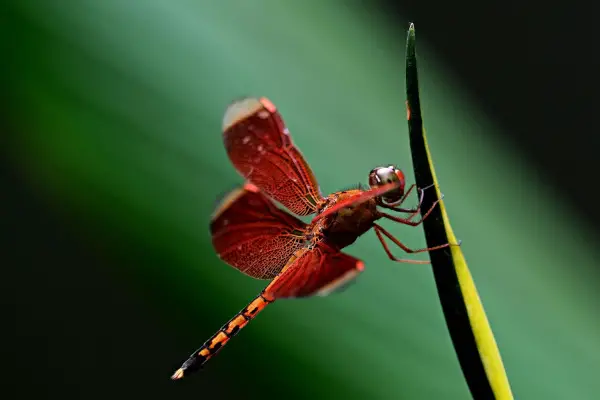
The Dragonfly as a Messenger of Change and Transformation
The dragonfly’s life cycle is a powerful metaphor for transformation. It begins its existence underwater as a nymph, spending months or even years in this stage before emerging into the air as a fully developed dragonfly. This dramatic metamorphosis mirrors human experiences of growth, change, and self-discovery.
In Chinese culture, the dragonfly is often seen as a spiritual messenger, reminding people to embrace change rather than fear it. When a dragonfly appears unexpectedly, it is believed to signal an impending shift—perhaps a career breakthrough, a personal awakening, or a new chapter in life. This belief has led many to view dragonflies as symbols of resilience, encouraging individuals to adapt to new circumstances with grace and confidence.
Additionally, dragonflies are associated with clarity of vision. Their large, multifaceted eyes allow them to see the world from multiple angles, symbolizing wisdom and a deeper understanding of life’s complexities. This is why dragonflies are often linked to enlightenment and self-awareness in Chinese thought.
How Traditional Chinese Art Depicts the Dragonfly
Throughout Chinese history, dragonflies have been a beloved subject in art, appearing in paintings, ceramics, and embroidery. Artists frequently depict them alongside lotus flowers, symbolizing purity, peace, and spiritual awakening. Their presence in traditional ink paintings often represents lightness and joy, capturing the essence of a carefree existence.
During the Tang and Song dynasties, dragonflies were common motifs in porcelain and silk tapestries. Delicate brushstrokes were used to highlight their slender bodies and translucent wings, emphasizing their ethereal beauty. Even today, dragonfly imagery is popular in Chinese calligraphy and decorative arts, often serving as a reminder of harmony, transformation, and good fortune.
Symbolic Meanings of the Dragonfly in Chinese Culture
In Chinese culture, dragonflies are revered as potent symbols of prosperity and good fortune. Their presence is often seen as an auspicious sign, particularly when they enter homes or businesses. It is believed that dragonflies bring blessings, harmony, and positive energy, making them a cherished emblem in various traditions.
The connection between dragonflies and wealth is deeply rooted in agricultural practices; farmers welcomed these insects for their role in controlling pests, which ultimately contributed to bountiful harvests. Thus, the dragonfly’s appearance is often interpreted as a harbinger of financial success and abundance.
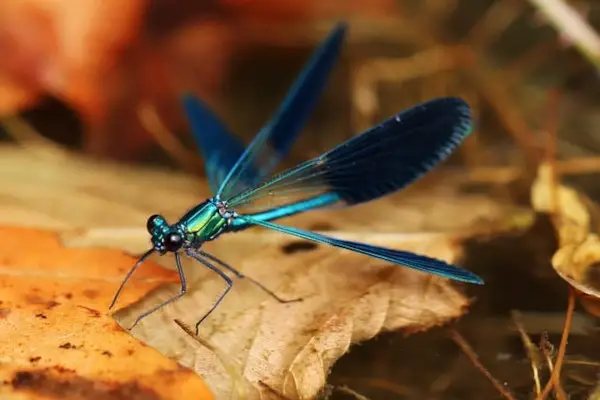
The Connection Between Dragonflies and Joy
Dragonflies, with their vibrant colors and graceful movements, have long been linked to happiness and lightness of being. Their effortless flight and playful behavior make them symbols of joy, reminding people to live in the present and appreciate life’s simple pleasures.
In Chinese poetry and literature, dragonflies often appear in scenes of tranquil gardens and peaceful waters, evoking feelings of serenity and contentment. Their fleeting presence also serves as a reminder that joy is best experienced in the moment, encouraging mindfulness and a carefree attitude.
Representing Strength and Resilience
Despite their delicate appearance, dragonflies are remarkably strong and adaptable. They can fly in multiple directions with precision, navigate changing winds, and travel long distances with minimal effort. This unique ability makes them a powerful symbol of resilience in Chinese culture.
Their transformation from water-dwelling nymphs to airborne creatures mirrors the ability to overcome challenges and emerge stronger. Because of this, the dragonfly is often associated with perseverance and inner strength, inspiring individuals to face adversity with confidence and grace.
Related reading: The Butterfly as Symbol in Feng Shui and Chinese Culture – Opens in new tab
A Symbol of Spiritual Growth and Enlightenment
Dragonflies are also linked to self-awareness and personal transformation. Their journey from one stage of life to another reflects the path of spiritual growth, making them symbols of enlightenment in Chinese philosophy.
The dragonfly’s ability to move seamlessly between water, land, and air represents transcendence and the pursuit of wisdom. In traditional beliefs, encountering a dragonfly may signify a period of deep reflection or an invitation to explore one’s higher purpose.
This belief aligns with the idea that dragonflies are messengers from the divine, guiding individuals toward personal transformation and deeper understanding.
The Balance Between Yin and Yang in Dragonfly Symbolism
In Feng Shui and Chinese cosmology, the dragonfly embodies the harmony of yin and yang—the dual forces of balance in the universe. Its connection to both water (yin) and air (yang) symbolizes equilibrium between emotion and action, intuition and intellect, stillness and movement.
By appearing effortlessly balanced in flight, the dragonfly serves as a visual reminder to maintain harmony in life. Whether in relationships, career, or personal well-being, the dragonfly encourages a state of fluidity and adaptability, helping individuals align with the natural flow of energy.

The Role of the Dragonfly in Feng Shui
In Feng Shui, the dragonfly is a symbol of lightness, transformation, and vibrant energy. Its presence is believed to enhance the flow of positive chi (qi)—the life force that brings harmony and prosperity into a space. Dragonflies are associated with renewal and joy, making them ideal for dispelling stagnation and revitalizing environments that feel heavy or uninspired.
Because of their connection to movement and adaptability, dragonflies are particularly useful for encouraging personal growth and new opportunities. When placed in a home or workspace, they serve as a reminder to embrace change and allow positive transformations to unfold naturally.
The Dragonfly and the Five Elements: Finding the Perfect Placement
In Feng Shui, everything is connected to the Five Elements—Wood, Fire, Earth, Metal, and Water—which influence energy flow in a space. The dragonfly carries attributes of several elements, making it a versatile symbol for different areas of the home:
- Water Element (Flow & Wisdom) – Dragonflies thrive near water, making them perfect for areas that require a sense of calm and reflection. Placing dragonfly symbols near fountains, aquariums, or water features enhances clarity and emotional well-being.
- Wood Element (Growth & Creativity) – Their connection to nature aligns with the Wood element, making them ideal for creative spaces like offices or study areas. A dragonfly image here can inspire fresh ideas and innovation.
- Fire Element (Passion & Energy) – The iridescent shimmer of a dragonfly’s wings embodies Fire energy, bringing dynamism and motivation. Dragonfly décor in red or gold can energize living rooms or workspaces.
- Earth Element (Stability & Nourishment) – To create a sense of grounding and balance, dragonfly motifs in earthy tones (brown, beige, or green) can be placed in bedrooms or meditation areas.
- Metal Element (Clarity & Focus) – Dragonfly symbols in metallic shades, such as silver or bronze, are excellent for bringing focus and organization, especially in workspaces or study areas.
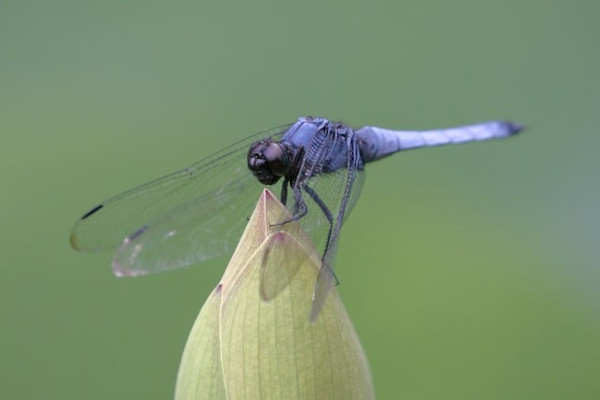
Where to Place Dragonfly Symbols for Maximum Benefit
Strategic placement of dragonfly imagery or decorations in the home or office can amplify its positive effects. Here are some key areas to consider:
- Near Windows & Entrances – Dragonflies symbolize freedom and new opportunities. Placing them near doors or windows invites positive chi and fresh energy into the space.
- Living Room – A dragonfly painting or sculpture in the living room enhances harmony and joy, making gatherings more uplifting.
- Workspaces & Study Areas – To encourage creativity, motivation, and clarity, dragonfly décor can be placed near a desk or bookshelf.
- Bedroom – Dragonflies symbolize transformation and emotional growth, making them a good fit for bedrooms to promote restful sleep and personal development.
- Garden & Outdoor Spaces – A dragonfly wind chime or garden ornament brings peace and balance to nature-filled environments, harmonizing the outdoor energy.
Best Colors and Materials for Dragonfly Décor in Feng Shui
The colors and materials used for dragonfly decor play a significant role in enhancing their symbolic meanings within Feng Shui. Here are some suggestions:
- Colors:
- Blue: Represents tranquility and calmness, ideal for promoting peace.
- Green: Symbolizes growth and renewal, perfect for areas focused on personal development.
- Gold or Yellow: Associated with wealth and prosperity, these colors can attract abundance.
- Black and White: These colors embody balance between yin and yang energies.
- Materials:
- Glass or Crystal: Reflects light beautifully, enhancing clarity and positivity.
- Wood: Connects with nature, fostering a sense of grounding.
- Metal: Encourages strength and resilience.
Choosing the right colors and materials for your dragonfly decor not only enhances aesthetic appeal but also amplifies their energetic properties in your living space.
Want to learn more about Feng Shui? Take a look at these Courses and Books – Aff.link
Dragonflies in Chinese Art, Jewelry, and Home Décor
Dragonflies have long been a beloved subject in Chinese art, symbolizing grace, transformation, and harmony with nature. Their elegant, fleeting presence makes them a perfect representation of life’s transient beauty. Throughout history, dragonflies have appeared in traditional ink paintings, silk embroidery, ceramics, and lacquerware, often depicted hovering over lotus flowers, reeds, or tranquil waters, reinforcing their connection to peace and enlightenment.
During the Tang and Song dynasties, dragonflies were frequently illustrated in gongbi (meticulous brushwork) paintings, where their delicate wings and slender bodies were captured with remarkable precision. In calligraphy, the dragonfly’s light and airy movement symbolized freedom of thought and spiritual elevation, inspiring scholars and poets alike.
Even today, dragonfly imagery continues to be a popular motif in contemporary Chinese artwork, reflecting its enduring cultural significance.
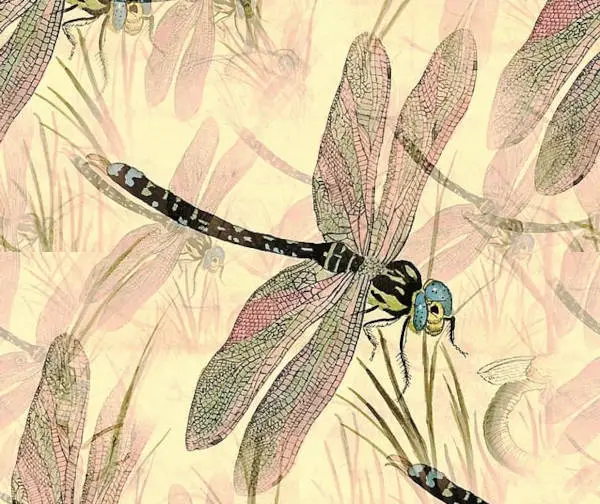
How Dragonfly-Themed Jewelry Brings Luck and Protection
In Chinese symbolism, wearing dragonfly jewelry is believed to bring good fortune, joy, and personal growth. These pieces are often crafted from gold, jade, silver, and precious gemstones, each material adding its own layer of meaning.
- Jade Dragonfly Pendants – Jade is considered a protective stone in Chinese culture, symbolizing purity, wisdom, and longevity. A jade dragonfly necklace is believed to offer spiritual balance and protection from negative energies.
- Gold & Silver Dragonfly Charms – These metals attract wealth and prosperity, making dragonfly bracelets or rings an ideal gift for those seeking career success or financial growth.
- Gemstone-Encrusted Dragonflies – Dragonfly brooches or earrings adorned with turquoise, amethyst, or citrine enhance different aspects of life—turquoise for health, amethyst for wisdom, and citrine for abundance.
Beyond their aesthetic appeal, dragonfly-themed jewelry serves as a symbolic talisman, encouraging the wearer to embrace change and approach life with optimism.
Decorating with Dragonflies for a Balanced and Peaceful Home
Dragonfly-inspired home décor is a wonderful way to infuse a living space with positive energy, beauty, and Feng Shui harmony. Their imagery can be incorporated in subtle or striking ways, depending on the desired effect.
- Wall Art & Paintings – A delicate ink painting of dragonflies and lotus flowers enhances serenity in a bedroom or meditation space, encouraging a sense of peace and enlightenment.
- Dragonfly Figurines & Sculptures – Placing small crystal or jade dragonfly figurines in living areas or office spaces can promote clarity, creativity, and joy.
- Textiles & Embroidery – Silk cushions, tapestries, or curtains with dragonfly patterns can bring an air of lightness and grace to a room.
- Wind Chimes & Garden Accents – A dragonfly wind chime in the garden or near a window can attract positive chi and a sense of tranquility.
Incorporating dragonfly décor into your home not only adds visual elegance but also serves as a symbolic reminder of resilience, transformation, and the beauty of embracing change.

Comparisons Between Chinese Beliefs and Other Traditions
The dragonfly is a powerful symbol in many cultures, each interpreting its meaning through unique spiritual, mythological, and artistic lenses. While Chinese tradition associates dragonflies with prosperity, transformation, and harmony, other cultures also view them as messengers of change, symbols of good fortune, and even representations of the afterlife.
Japanese Culture: A Symbol of Strength and Courage
In Japan, dragonflies—called tonbo—are seen as symbols of strength, victory, and perseverance. Samurai warriors admired them for their ability to move swiftly and decisively, often incorporating dragonfly motifs into armor and weapons. The dragonfly was also a national emblem in ancient Japan, earning the country the poetic name Akitsushima (秋津島) (Land of the Dragonflies). Unlike the Chinese focus on transformation and balance, the Japanese perspective emphasizes bravery and determination.
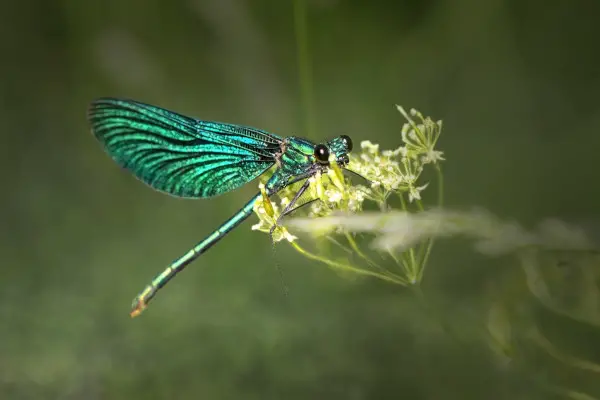
Native American Beliefs: Transformation and Illusion
Among Native American tribes, dragonflies are often associated with change, adaptability, and spiritual awakening. Some tribes believe they are shape-shifters or tricksters, appearing as illusions to teach people important lessons about seeing beyond surface appearances.
Others see dragonflies as symbols of renewal and rebirth, much like in Chinese culture, where they represent personal growth and enlightenment.
The Navajo tribe considers dragonflies sacred animals that bring good luck and signal the arrival of summer. Dragonfly imagery is often used in art and beadwork to invoke protection and wisdom. In some traditions, whispering wishes to a dragonfly is believed to carry those desires to the heavens, showcasing their role as spiritual intermediaries.
European Folklore: A Mysterious and Dual Nature
European folklore presents a more complex and sometimes darker interpretation of dragonflies. In some traditions, they are seen as harbingers of luck and transformation, much like in China.
However, in certain medieval legends, dragonflies were linked to superstition, sometimes called “devil’s darning needles” due to their needle-like bodies. Over time, this negative perception faded, and dragonflies became symbols of lightness, joy, and self-discovery in modern Western cultures.
In Sweden, it is said that dragonflies fly around the neck to measure the value of souls, adding a mystical dimension to their symbolism.
Hinduism and Buddhism: A Reflection of Impermanence
In both Hindu and Buddhist philosophies, the dragonfly represents the fleeting nature of life and the importance of mindfulness. Its short lifespan serves as a reminder to live fully in the present moment, a concept that aligns with the Taoist and Feng Shui interpretations in Chinese culture.
The dragonfly’s ability to move seamlessly between air and water also reflects spiritual evolution, much like in Chinese beliefs where it symbolizes enlightenment.
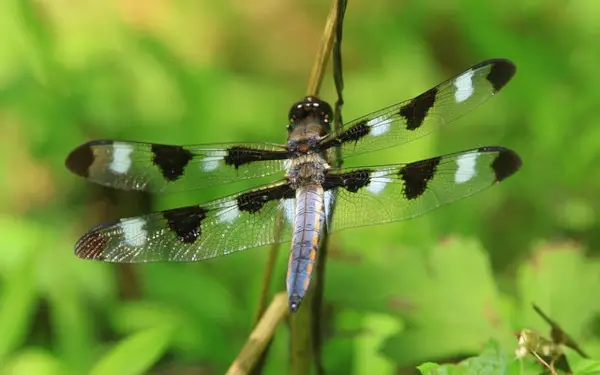
African and Caribbean Traditions: A Connection to Ancestors
In some African and Caribbean cultures, dragonflies are considered messengers from ancestors or the spirit world. Seeing a dragonfly may signify a message from a loved one who has passed or a sign of protection.
This belief is similar to certain Chinese folk traditions, where dragonflies are thought to carry messages between realms and serve as a bridge between the living and the divine.
Common Threads Across Cultures
Despite the differences in interpretation, several themes remain consistent across traditions:
- Transformation & Growth – Whether in Chinese Feng Shui, Native American beliefs, or Buddhist philosophy, dragonflies symbolize personal and spiritual evolution.
- Lightness & Joy – Many cultures see dragonflies as symbols of happiness, freedom, and adaptability.
- Connection to the Spiritual World – From Chinese folklore to African traditions, dragonflies are often viewed as messengers between realms, linking the physical and the unseen.
While each culture sees the dragonfly through its own lens, the universal appreciation for its grace, beauty, and symbolic depth remains unchanged.
Final Thoughts
The dragonfly, with its delicate wings and graceful flight, holds deep symbolic meaning in Chinese culture and Feng Shui. Representing prosperity, joy, resilience, and transformation, it serves as a reminder to embrace change and find harmony in life. In Feng Shui, dragonfly imagery helps to enhance positive chi, bringing renewal and balance to living spaces.
Beyond China, cultures worldwide have revered the dragonfly for its spiritual significance, adaptability, and connection to the unseen. Whether as a symbol of strength in Japan, a messenger of transformation in Native American traditions, or a reminder of life’s impermanence in Buddhism, the dragonfly continues to inspire and uplift across generations and traditions.
By incorporating dragonfly motifs into art, jewelry, and home décor, individuals can harness its powerful symbolism to invite good fortune, wisdom, and peace into their lives. No matter how it is interpreted, the dragonfly remains a timeless emblem of grace, renewal, and the ever-changing flow of life.
Additional resources for further exploration
Stay in Touch
 Join our newsletter by using the forms on this website or click here!
Join our newsletter by using the forms on this website or click here! Follow us on Google News
Follow us on Google News Follow us on Facebook
Follow us on Facebook
Featured Image by Michael Kleinsasser from Pixabay

